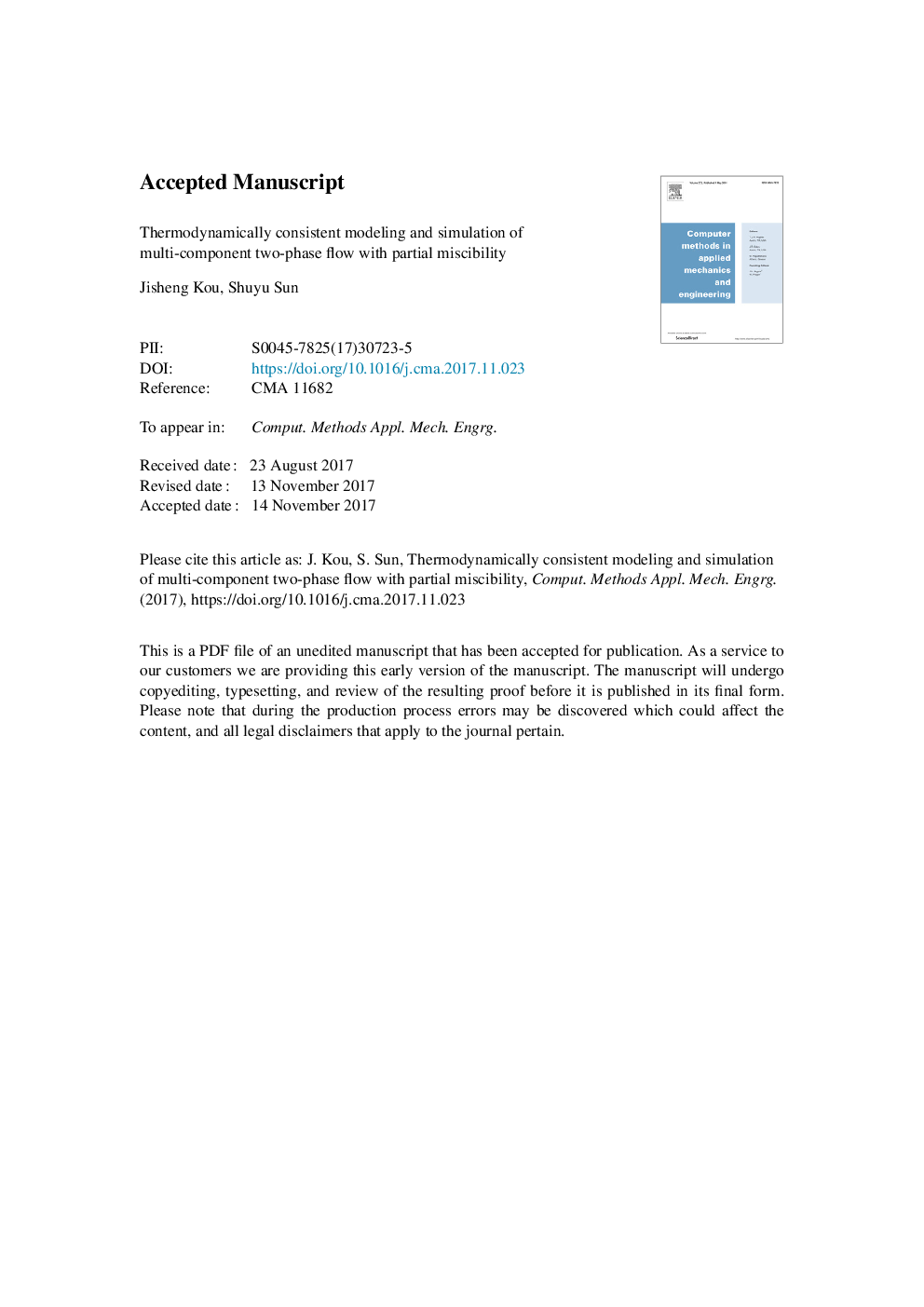| کد مقاله | کد نشریه | سال انتشار | مقاله انگلیسی | نسخه تمام متن |
|---|---|---|---|---|
| 6915670 | 1447404 | 2018 | 33 صفحه PDF | دانلود رایگان |
عنوان انگلیسی مقاله ISI
Thermodynamically consistent modeling and simulation of multi-component two-phase flow with partial miscibility
ترجمه فارسی عنوان
مدل سازی و ترمودینامیک پایدار و شبیه سازی جریان چند فاز دو فازی با تقارب جزئی
دانلود مقاله + سفارش ترجمه
دانلود مقاله ISI انگلیسی
رایگان برای ایرانیان
کلمات کلیدی
موضوعات مرتبط
مهندسی و علوم پایه
مهندسی کامپیوتر
نرم افزارهای علوم کامپیوتر
چکیده انگلیسی
A general diffuse interface model with a realistic equation of state (e.g. Peng-Robinson equation of state) is proposed to describe the multi-component two-phase fluid flow based on the principles of the NVT-based framework which is an attractive alternative recently over the NPT-based framework to model the realistic fluids. The proposed model uses the Helmholtz free energy rather than Gibbs free energy in the NPT-based framework. Different from the classical routines, we combine the first law of thermodynamics and related thermodynamical relations to derive the entropy balance equation, and then we derive a transport equation of the Helmholtz free energy density. Furthermore, by using the second law of thermodynamics, we derive a set of unified equations for both interfaces and bulk phases that can describe the partial miscibility of multiple fluids. A relation between the pressure gradient and chemical potential gradients is established, and this relation leads to a new formulation of the momentum balance equation, which demonstrates that chemical potential gradients become the primary driving force of fluid motion. Moreover, we prove that the proposed model satisfies the total (free) energy dissipation with time. For numerical simulation of the proposed model, the key difficulties result from the strong nonlinearity of Helmholtz free energy density and tight coupling relations between molar densities and velocity. To resolve these problems, we propose a novel convex-concave splitting of Helmholtz free energy density and deal well with the coupling relations between molar densities and velocity through very careful physical observations with a mathematical rigor. We prove that the proposed numerical scheme can preserve the discrete (free) energy dissipation. Numerical tests are carried out to verify the effectiveness of the proposed method.
ناشر
Database: Elsevier - ScienceDirect (ساینس دایرکت)
Journal: Computer Methods in Applied Mechanics and Engineering - Volume 331, 1 April 2018, Pages 623-649
Journal: Computer Methods in Applied Mechanics and Engineering - Volume 331, 1 April 2018, Pages 623-649
نویسندگان
Jisheng Kou, Shuyu Sun,
